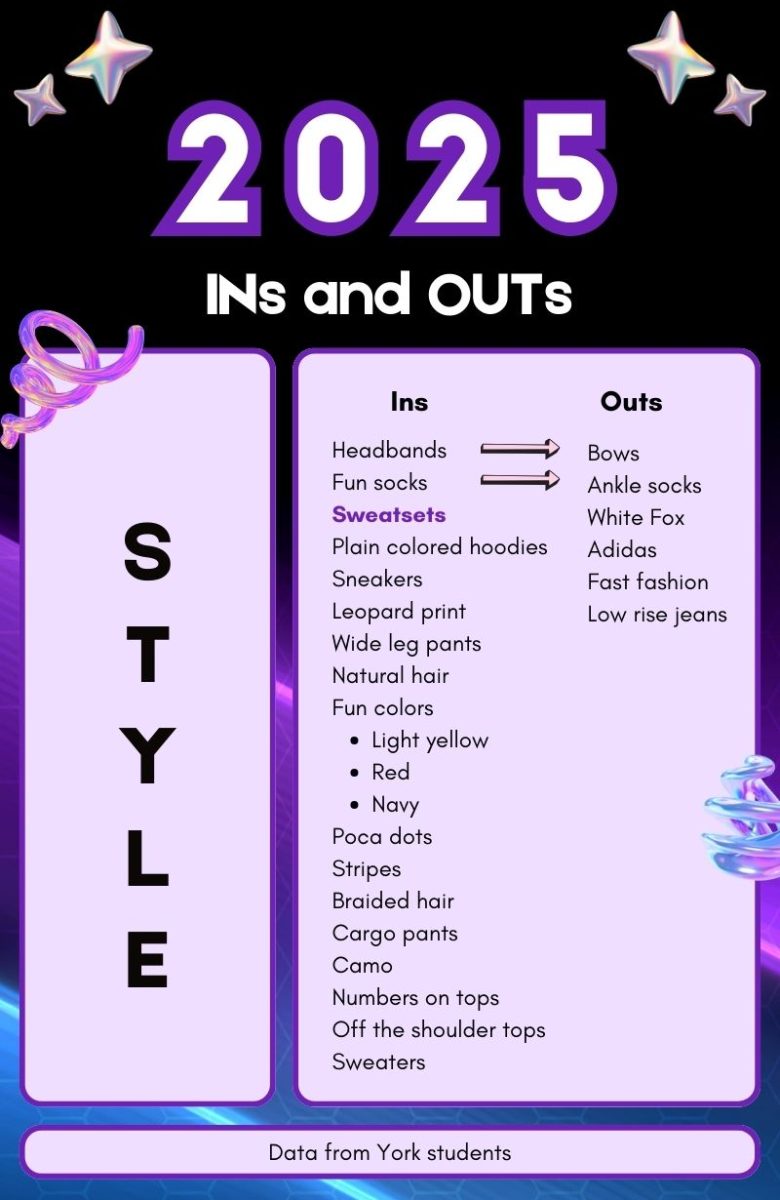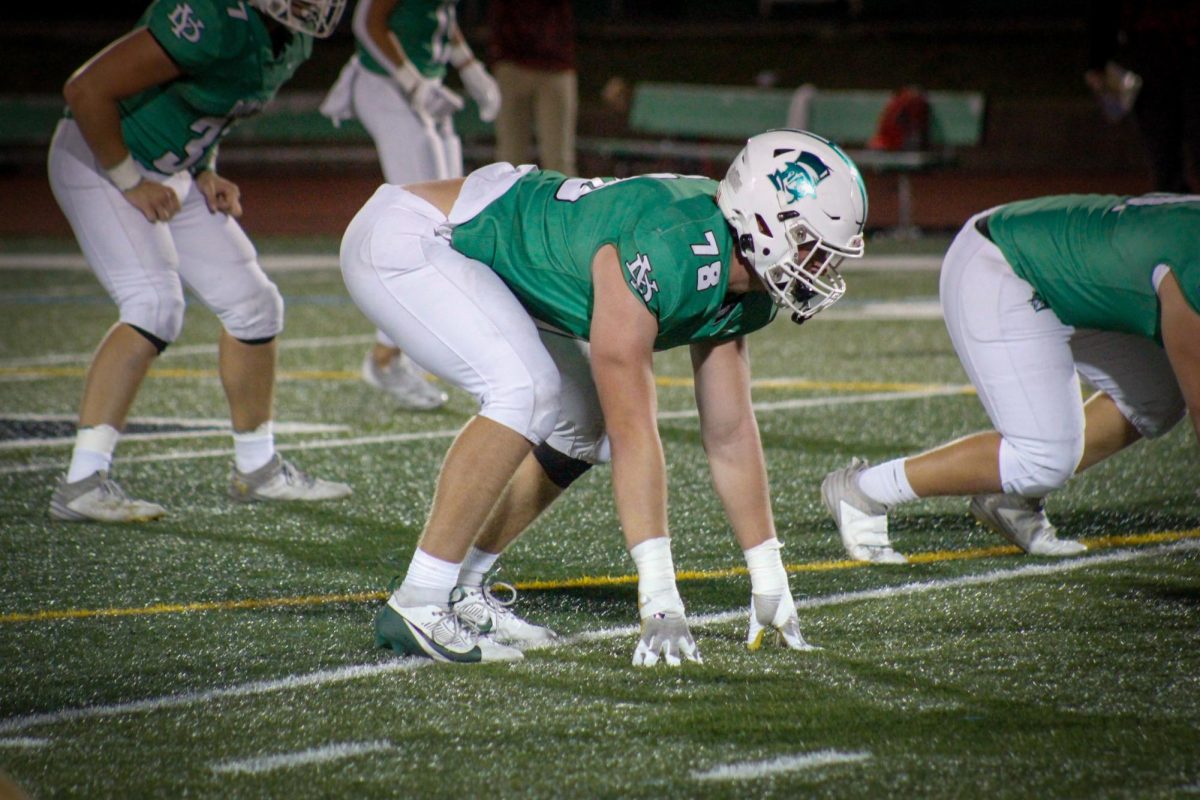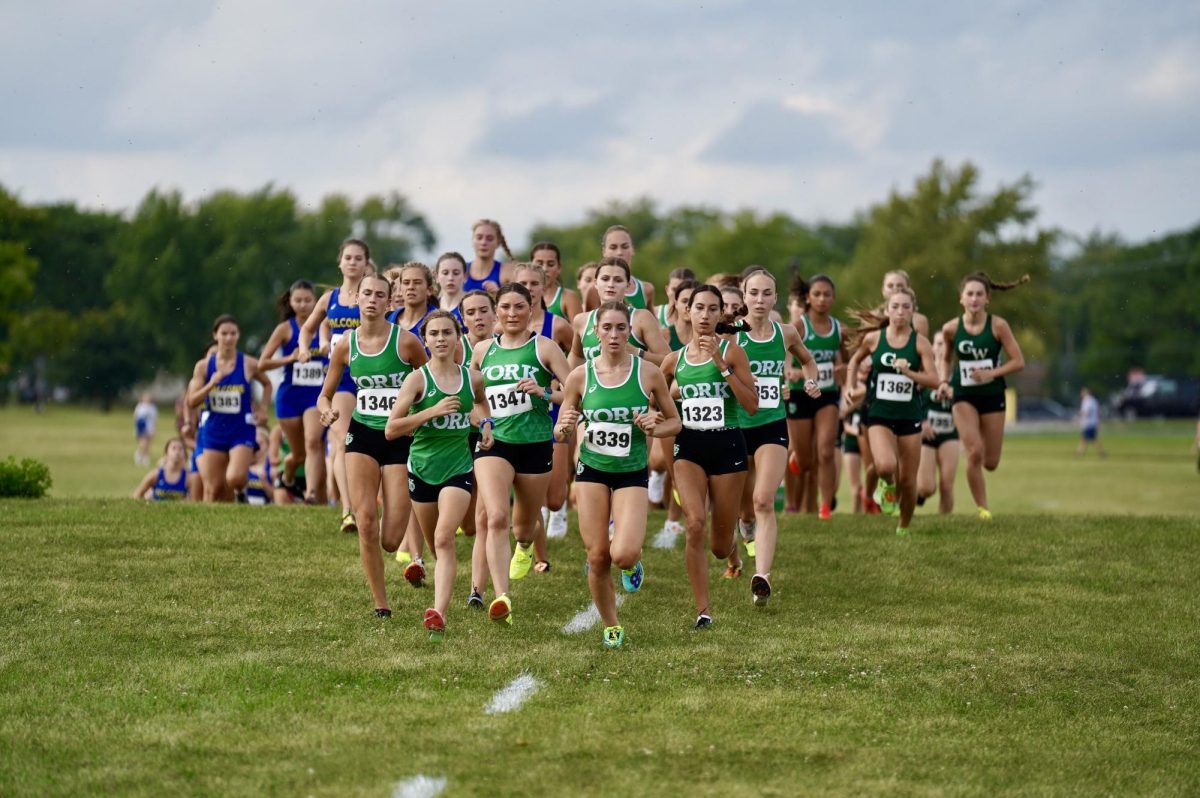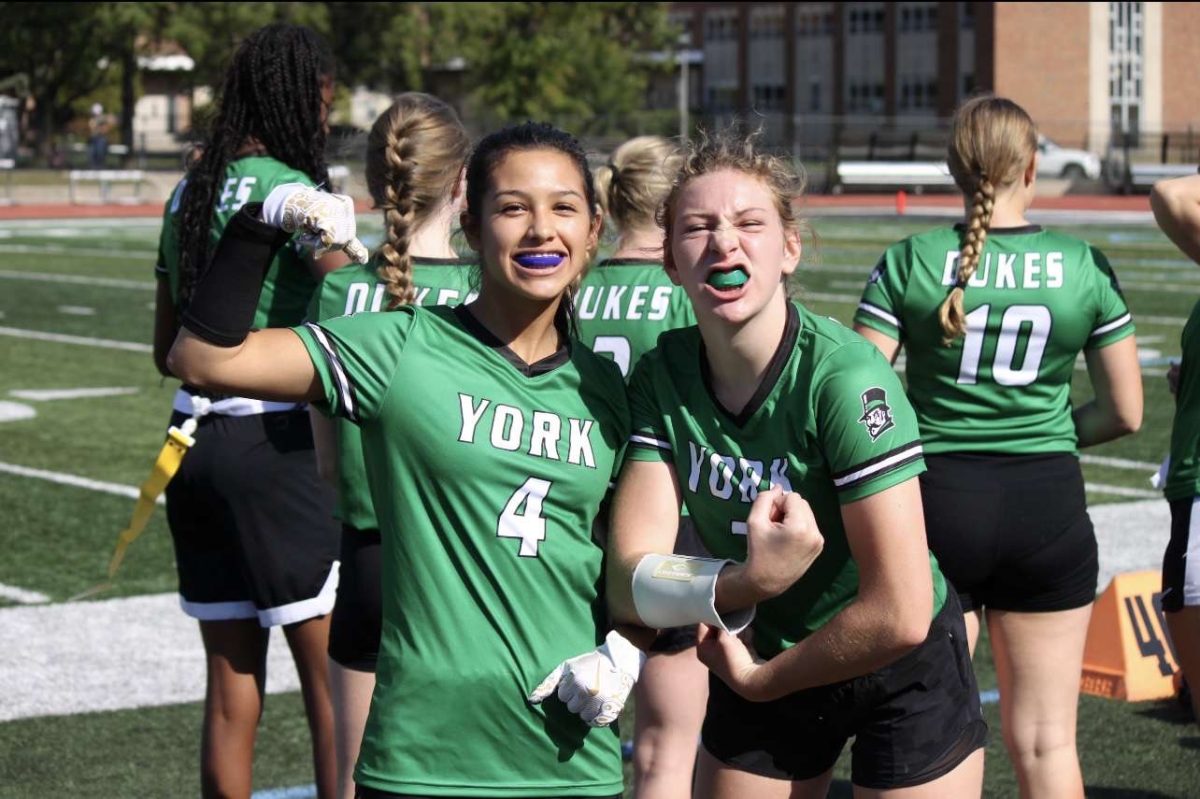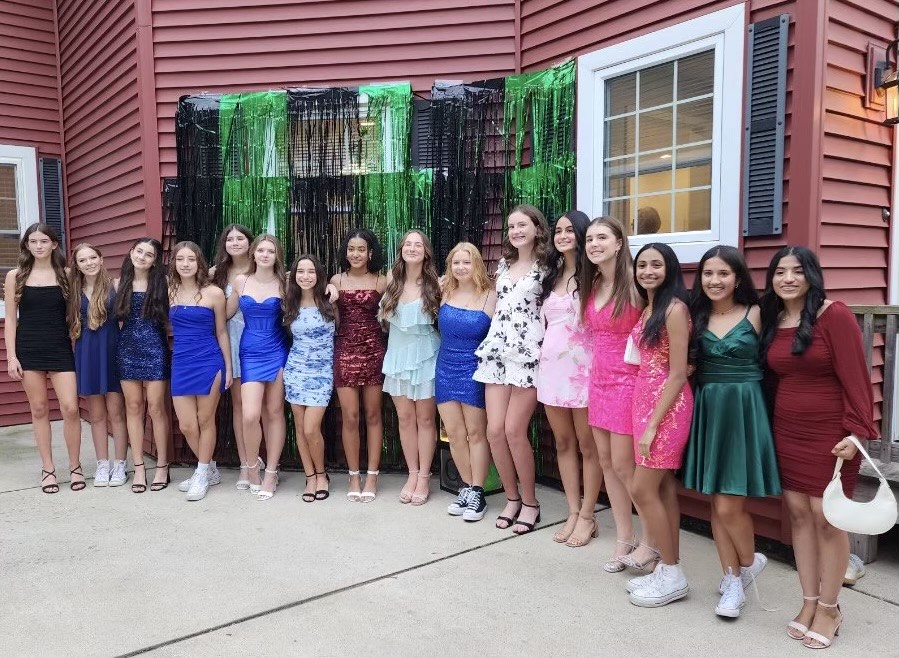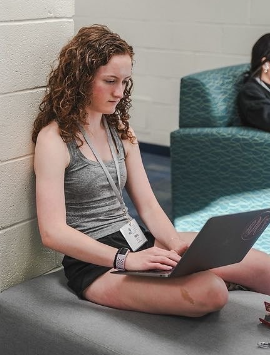This story was originally published in the Spring 2024 York-Hi Magazine
This school year has seen a variety of changes in building procedures. While these changes are often solely accredited to new administration, there are many variables that play a role in implementing new systems.
“We have a strategic plan as a district and that strategic plan guides what we do as administrators,” Jessica Hurt, principal, said. “We are held accountable to make sure that we’re making progress. The Board of Education created the strategic plan. That strategic plan shows us what our goals should be, and I have to show evidence towards those goals. We need to work with the system in order to bring structure.”
There are a series of steps that must take place before a procedure can be carried out in the building. Much like any governing body, York Community High School and Elmhurst Community Unit School District 205, operate under a series of checks and balances that ensure all stakeholders are being represented.
Policy setting the groundwork
While changes in procedures are what have a more direct effect on student life in the building, all procedures are a reflection of the larger scale policies being implemented across Elmhurst Community Unit School District 205.
“It is the school board’s responsibility to develop and maintain a policy manual that covers eight different areas across the organization,” Beth Hosler, vice president of the Board of Education and member of the policy committee, said. “The policy manual is how we establish the priorities, the expectations and the direction for all the procedures in District 205.”
Policy lays the groundwork for all procedures and policy making is a task that is delegated to the board of education. It’s a reflection of both government mandates and district trends.
“[The Policy Manual] ensures that we are legally compliant,” Hosler said. “A lot of time policies come to be because of federal or state legislation. There are certain things that we have to comply with based on that legislation, so our policies have to reflect that. If legislation changes, our policies have to be updated as well.”
Policies are largely determined by bills being passed and court rulings being made. While the district has systems in place, PRESS for example, that help to pass on relevant legislation and pin point revisions that need to be made for federal compliance, it is up to the school board to determine how to implement these revisions in a way that supports the specific needs of District 205.
“As long as we’re legally compliant, there is flexibility with the wording of the policy to make sure that it suits our district and meets the needs of our students and all stakeholders,” Hosler said. “We always want to make sure that our policies reflect the priorities and the needs of our district.”
Because policy is intended to reflect organizational needs, it is often adapted when district trends shift. For this reason, the board has procedures in place that ensure every policy is touched at least once every five years. Additionally, the policy committee meetings are open to the public in order to ensure that constituent voices are being heard while addressing policy.
“People can come speak and make public comments,” Courtenae Trautmann, secretary for the Board of Education and chair of the policy committee, said. “The agenda for the policies that we are going to look at are posted beforehand. Anybody can speak to those policies, they can come and talk at the pier committee meeting if they have a position on that policy that they want us to know. They can also email us. We consider all of that information in the policy meetings that we have.”
While policies act as a guideline that represents district wide interests and legal mandates, they remain intentionally broad in order to leave room for different procedures across different district buildings. Because each school building has its own distinct culture, procedures allow schools to preserve their identity while still staying in compliance with policy structure.
“We want it to be a little more general at the policy level, and then procedurally, within the building, those things can change and that information is what will be given directly to students,” Beth Hosler, Board of Education vice president, said.
Despite policy allowing for wiggle room at the procedural level, procedures must still align with what is expressed in the policy manual. In order to maintain order, policy should be reflected in all building initiatives.
“Our current district administration has been very proactive in recognizing how important the policy manual is, because it really does give you the authority for everything that’s going on in the buildings,” Trautmann said.
The transition from policy to procedure requires a healthy balance of maintaining regulations enforced by the board of education, while also preserving the individual needs of students within each space.
“The school board passes a policy, so that filters on down, and then it gets very granular in regard to what is being taught in the classroom,” Adam Roubitchek, assistant principal for instruction, said. “We have to make sure that we are following the policy, but also giving our interpretation of what we think is best.”
Discussion and situation assessment
Policy has always set guidelines for procedure, but it is often in-building-trends that provoke procedural change. Administration meets weekly in leadership committees to discuss shifts in behavior within the building, and possible responses to those shifts.
“We go through a lot of processes,” Hurt said. “We have our senior leadership team that meets on Mondays and building leadership teams that meet on Tuesdays. Once we start having these conversations, we identify the problem, we get all the data, and then we work through different solutions.”
These discussions can stem from a change in policy or a perceived shift within the building. It is the administration’s job to be aware of these two changing entities, as well as delegate what department is incharge of the response process. York has four assistant principals who lead organizational activity in their respective realm. These areas include culture and climate, led by Tim Dykes, student experience, led by Drew McGuire, athletics, led by Rob Wagner and instruction, led by Adam Roubitchek.
“Depending on whose bucket it falls in, that is who [Hurt] will direct,” Roubitchek said. “If it’s curriculum, then that will fall to me. Then I would work with my division chairs to dig a little bit deeper. So it is very hierarchical.”
Because the building dynamic is in a constant state of progression, administration is always adapting to comply with these shifts. Not only are procedures intended to reflect changes within the building and changes with policy, but also changes beyond York.
“Our goal is to make sure that students are ready once they leave York High School,” Roubitchek said. “When you move on to any postsecondary opportunity, we want to make sure that we have given you the skills. Trying to assess what’s happening out there in the world and then adjusting to it internally takes a lot of time.”
Having regular discussions about changes in all areas, both in and out of the organization, allows administration to stay up to date on current trends and student needs. While these discussions are not always done with the intention of changing a procedure, having that baseline awareness helps create structure for progress.
“Our goal as an administration is to make things work better,” Hurt said. “We want to make sure that these are the best four years that you can have. That you’re safe, that you’re healthy, that you have those skills to be successful after you leave York.”
Data Collection
A significant part of procedural analysis lies within stakeholder feedback. This step is revisited multiple times throughout the procedure making process, both through surveys and during in person committee meetings.
“When people are making procedures, we use a lot of data,” Hurt said. “It’s not capricious. We use data, we use research, we take a look at what’s happening in other schools.”
In regard to in person stakeholder collaboration, there are a plethora of avenues one can take. For students, there are a number of committees, including the Student Advisory Committee and the newly instated York Culture Committee. These organizations aim to seek insight on student experiences that could potentially influence future procedures.
“There’s a couple of great venues for people,” Hurt said. “We obviously have organizations like boosters and the PTA, we have student advisory panels. We are trying to get to a cross section of students. Certainly students can also make time to meet, send an email, we want to hear your feedback.”
This desire for student feedback is also presented in the administration’s commitment to using surveys. According to the Illinois Report Card Data from 2023, York’s participation in the state wide 5Essentials Climate survey was ten percent higher than the state average, with a completion rate of 96 percent.
“We send out those surveys so that students can give us feedback,” Hurt said. “There is not a time where I as a principle randomly dictate a change. The school doesn’t work like that. There’s a lot of collective groups that are taking data and making decisions.”
Being new to the building and still learning the ropes of all the different interest groups in the school community, Hurt values collaboration and data collection as a means to make sure that all voices are being represented in decision making. For example, recent changes in Cumulative Summative Assessments (CSAs) and the Assessment and Relearning (A&R) Days took many variables into consideration.
“With A&R Days and Cumulative Summative Assessments, we have a lot of stakeholders,” Hurt said. “We sent out a survey to students, we sent out a survey to families, and we asked them how A&R went at the end of last semester. What are positives? What are negatives? What are things that we can do better? Then we take all that data, it goes through the administrative teams, and then we work shop solutions.”
In addition to taking time to examine building feedback, administration also looks for data from other districts. As a member of the West Suburban Conference Board of Controls, Hurt meets with principals in neighboring communities once a month in order to exchange ideas and relevant data.
“Working through different solutions means that we are reaching out to local schools,” Hurt said. “We talk about policies and procedures that have worked in other districts. Once we gather that data, we come back together and we work through stuff as a building leadership team.”
While larger scale data holds value, innovation is fuelled by the opinions of those who are being impacted by change. Rather it’s in the form of a survey, a student group, or a parent organization, administration wants all community members to know that their insight matters.
“People have a lot of opinions, and I would just love for them to come and talk to me directly, as opposed to making fun of me in the hallway, that’s not the best form of feedback,” Hurt said. “I want students to feel like they have a voice.”
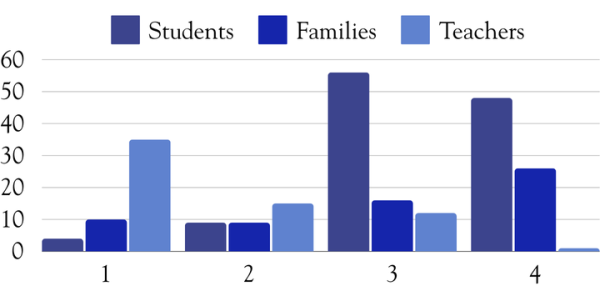
(4 = Very Valuable, 1 = Not worth the time). Data from the 2024 A&R survey. (Kate Brody)
Finding solutions
Once data has been acquired, administration is prepared to explore solutions that take feedback into account. School leadership works with outside districts, inside faculty and members of the York community, not only to recognize problems, but to explore solutions.
“With education, you don’t need to reinvent the wheel,” Hurt said. “You can go to places that are doing things well and consult stakeholders to see if it’s something that would work in our community.”
At the aforementioned West Suburban Conference Board of Controls meetings, Hurt is not only able to gather data about problems affecting other schools, but she is able to learn about possible solutions that may work for District 205.
“We come up with multiple solutions, and then we seek out stakeholders again,” Hurt said. “Part of my job as an administrator is to work with the Teachers Union. I go to [the teachers] and I tell them the potential solutions and ask for their feedback.”
Administration works to present possible solutions that worked in surrounding districts and consult stakeholders to see if those initiatives would work in our district. Making sure that all voices are being considered allows for well rounded procedures to be implemented.
“I haven’t been in the classroom for a decade, so it would be naive for me to not include teachers in the decision making process,” Hurt said. “I value our teachers, they are the people who have the closest relationship with our students.”
Furthermore, there is a timeliness component when developing procedures. Administration was met with mixed emotions after changing the A&R and CSA procedures so late in the semester. However, the time leading up to the announcement was necessary for making sure that all stakeholders were accounted for and all research was done thoroughly.
“Knowing that something we are doing is harming our students, and continuing to do it, isn’t smart,” Hurt said. “We heard from a lot of students that the end of first semester was stressful, they were confused. We had less than 300 students each day on campus for A&R. That to me shows us that is not meeting the needs of our students. To replicate that a second semester seems pretty insane.”
Hurt understands that change is a hard thing, especially when it happens at an unforeseen time. Taking the time to examine all solutions and perspectives, while not having to wait till next year to implement change, was a line that the administration was keenly aware of.
“For me I don’t love changing things midterm,” Hurt said. “I like things to be in a certain order, and so for me, that was the hardest part. But I knew I couldn’t stand by principle and let our students experience stress, anxiety, frustration, confusion.”
This is just one example of how timing is heavily considered when implementing change. It also shows how, despite the administration’s best efforts, procedural decisions are not going to make everyone happy. Even once all stakeholders are taken into consideration, there will still be discrepancies in who feels supported by the policy.
“As a school administrator, there are times at which you can’t win,” Roubitchek said. “In any leadership position, there are times where you’re not going to make people happy. But if you believe in the decision you’re making, if you believe in the process, and you believe in the outcome, it’s okay.”
Hearing Feedback
Because change in policy can often lead to mixed emotions, administration is always prepared to listen to feedback after a procedure is put in place. One example of a procedure garnering a variety of feedback was the recent change in A&R and CSA scheduling.
“If we look at feedback from surveys, there are some people that loved the A&R structure, there are some people that hated the A&R structure,” Roubitchek said. “It was from teachers, students and community members. So for any decision that’s made, someone is going to be upset. We just need to make sure that if they’re upset, they feel heard.”
Making sure that people’s worries are being validated is something that Roubitchek is constantly trying to do as a leader. Administrators recognize that procedures can be inherently controversial, so they want all community members to know that they understand where their concerns are coming from.
“I realize that people have frustrations and I’m an easy person to blame,” Hurt said. “I’m accountable for all things. And that’s okay, that’s part of my job. If students have concerns about stuff, they should come to me and talk to me. I’m open to talk to anybody and offer help.”
Administration hopes that being open to feedback after decisions are made will give community members peace of mind. People are highly encouraged to write emails, arrange meetings, and share their experiences if they feel like a procedure does not serve them.
“If something changes that [students] don’t like or if they want to affect change, our administration is open to meeting with students whenever,” Roubitchek said. “If something doesn’t rub you the right way, if something makes you upset, don’t just be upset about it. Tell somebody about it. All feedback is good feedback.”




